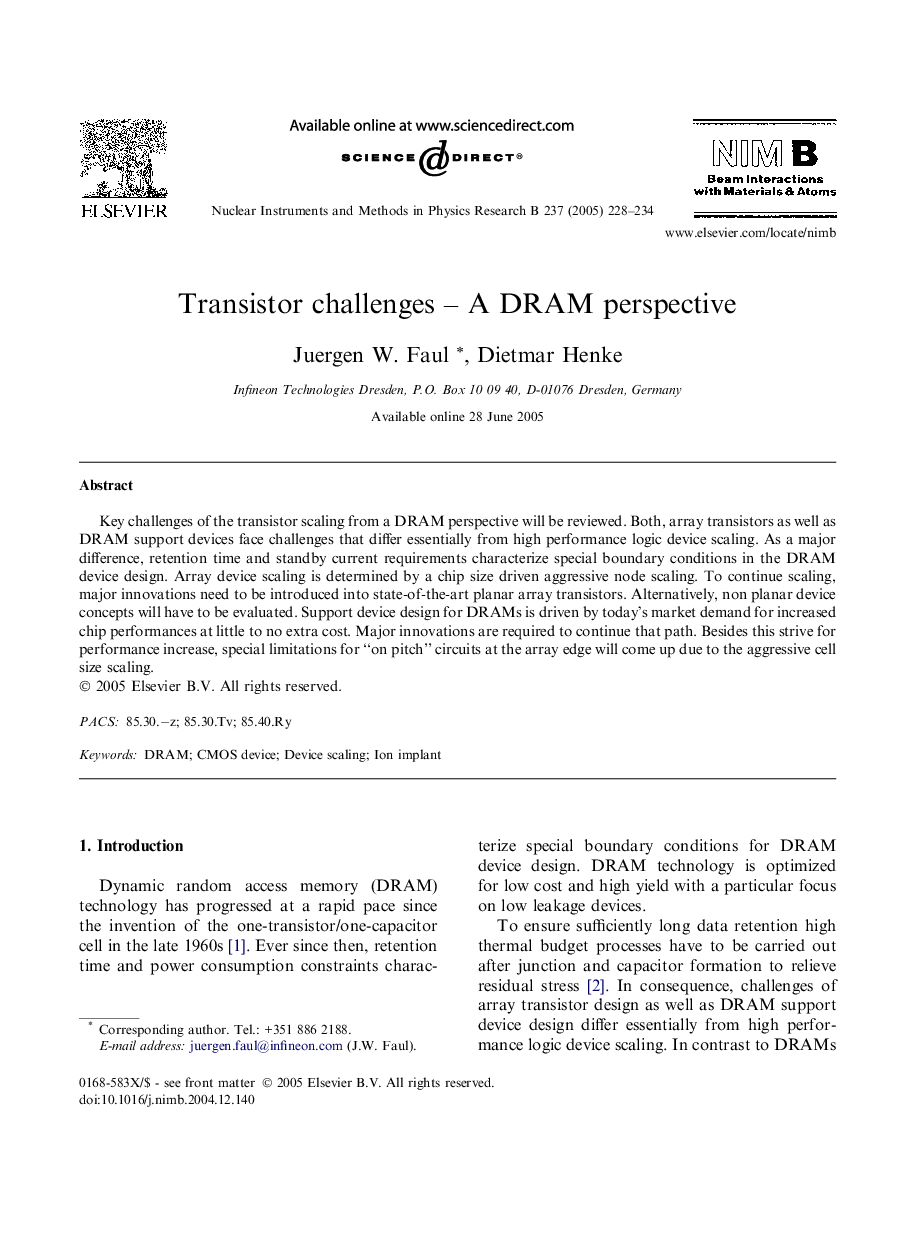| Article ID | Journal | Published Year | Pages | File Type |
|---|---|---|---|---|
| 9817752 | Nuclear Instruments and Methods in Physics Research Section B: Beam Interactions with Materials and Atoms | 2005 | 7 Pages |
Abstract
Key challenges of the transistor scaling from a DRAM perspective will be reviewed. Both, array transistors as well as DRAM support devices face challenges that differ essentially from high performance logic device scaling. As a major difference, retention time and standby current requirements characterize special boundary conditions in the DRAM device design. Array device scaling is determined by a chip size driven aggressive node scaling. To continue scaling, major innovations need to be introduced into state-of-the-art planar array transistors. Alternatively, non planar device concepts will have to be evaluated. Support device design for DRAMs is driven by today's market demand for increased chip performances at little to no extra cost. Major innovations are required to continue that path. Besides this strive for performance increase, special limitations for “on pitch” circuits at the array edge will come up due to the aggressive cell size scaling.
Related Topics
Physical Sciences and Engineering
Materials Science
Surfaces, Coatings and Films
Authors
Juergen W. Faul, Dietmar Henke,
